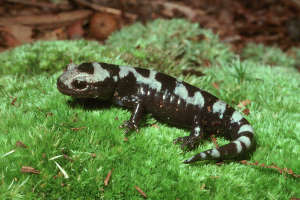Marbled salamanders are one of the few North American amphibians that deposit their eggs in late summer and early fall.
Photo Credit: Geoffrey A. Hammerson
Ambystoma opacum
Common Name: marbled salamander
Animal Guild: Amphibian
Class > Order > Family: Amphibia > Caudata > Ambystomatidae
